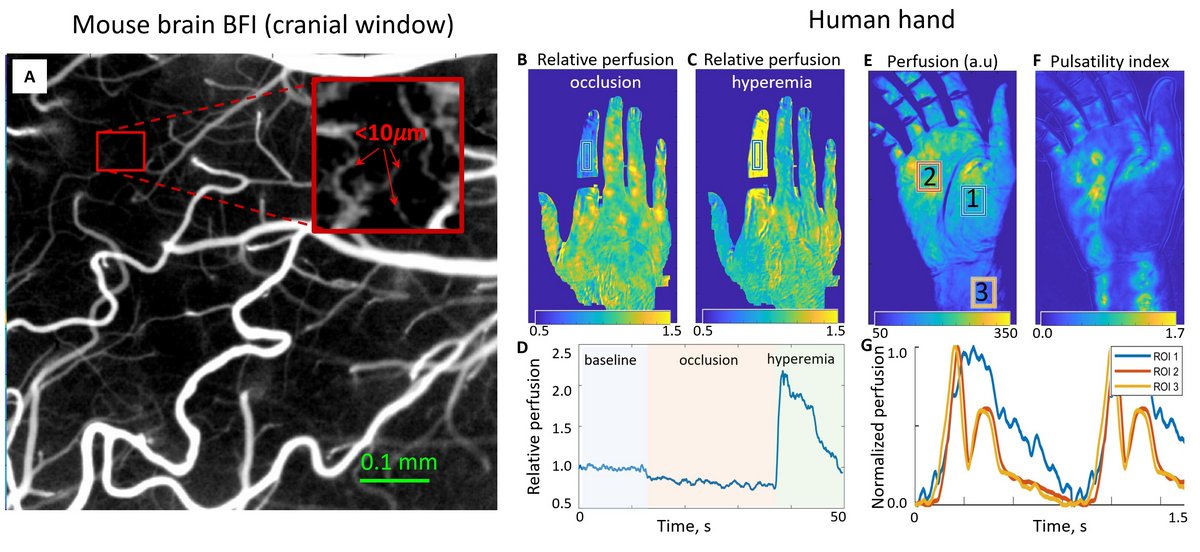At the Blood Flow Imaging Group (BFI), we focus on developing and applying non-invasive imaging technologies to study microvasculature in health and disease. Structural and functional abnormalities in small vessels and microcirculation play a critical role in various conditions, including different forms of dementia, hypertension and diabetes. By understanding the cause of such abnormalities and developing new ways to monitor them, we aim to improve diagnostics and treatment of the related diseases. The BFI group is interdisciplinary by nature, as our research includes animal and human experiments, engineering, and data analysis and relies on knowledge of physics and physiology. The main tools we utilize are based on light scattering and absorption imaging to provide blood flow and oxygenation information.
In addition to leading our own research, we are always open to collaboration and helping our colleagues with blood flow imaging techniques.
See Techniques available at the BFI Lab below.
Coordinator: Dmitry Postnov

Laser Speckle Contrast Imaging – rapidly developing (partially with our efforts) technique for non-invasive qualitative blood flow imaging that provides unparalleled flexibility in terms of resolution and field of view. At the BFI lab, we work on both animal and human LSCI imaging.

Dynamic Light Scattering Imaging – a laser speckle-based technique that provides quantitative information on scattering dynamics in biological tissues. At the BFI lab, we mostly utilize it for methodological research in light scattering and for calibration of LSCI-based tools.

High-Speed Laser Speckle Contrast Imaging (patent pending, EP 22173808) – a technology developed at the BFI lab to characterize fast propagating signals and measure microcirculatory stiffness. It allows quantitative imaging and measurements rate of ~5000 frames per second. We have implemented versions for human retinal and animal (any organ) imaging.
Optical Coherence Tomography – technology for 3D imaging of blood flow. Provides excellent spatial resolution and structural features characterization without requiring contrast agents. Depending on scanning and processing protocol can be used for absolute flow measurements (Doppler OCT, DLS OCT). Available for animal imaging.
Intrinsic Signal Optical Imaging – a technique for tissue oxygenation imaging. It can be combined with LSCI for simultaneous blood flow and oxygen saturation measurements.
Visible Light OCT (coming soon) – Optical Coherence Tomography technique that utilizes supercontinuum (white) laser as a light source. It allows for simultaneous imaging of blood flow and oxygenation at superior resolution compared to conventional OCT. We expect to acquire two systems in 2023, one for animal imaging (brain, retina and other organs) and one for human retinal imaging.